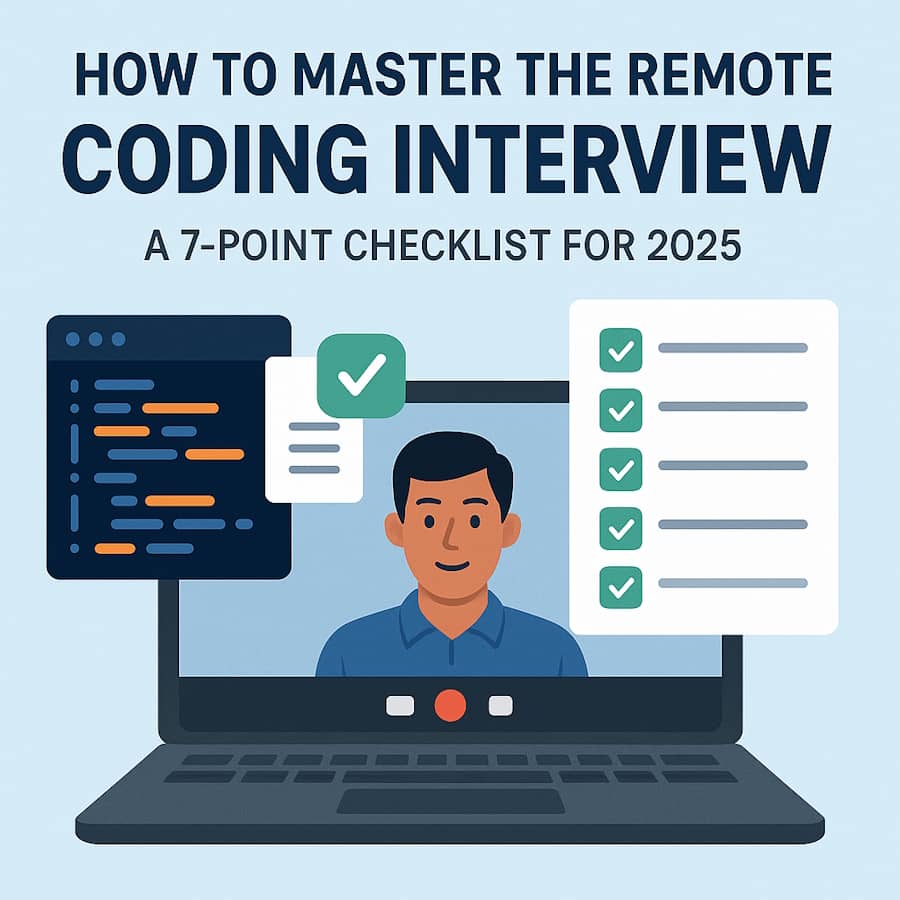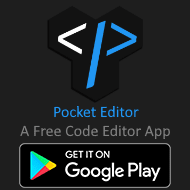In today’s era of work-from-home and remote hiring, the tech industry is not staying behind. They also implemented remote technical screening of their prospects, changing the way coding interviews are conducted. That is why excelling in your remote tech interview isn't just about solving algorithms; it's more about demonstrating your professional skills through a digital lens. Since most tech companies have refined their processes, their expectations for candidates are higher than ever. This guide provides an extensive, actionable 7-point checklist to help you practice coding interviews and secure your dream role in your next virtual coding interview.
1. Your foundation for success
What if, during the interview, your interviewer can’t hear you or your screen freezes? That would be a frustrating scenario, right? This is why you must prepare a solid tech setup.
- Internet: Whether it is a wired Ethernet connection or Wi-Fi, the connection must be strong and stable to reduce latency. If it is Wi-Fi, stay close to the router and ensure that no one else is streaming or downloading heavily.
- Audio & video: Use a high-quality external microphone, like a dedicated USB mic or a good headset. Ensure that your webcam captures a clear, well-lit image where your face is clearly visible.
- Environment: Sit for the interview in a quiet, private space, preferably with a neutral and tidy background that evokes professionalism and reduces distraction.
Pro tip: Do a full system test before the interview. Close all non-essential applications (especially Slack, email, and social media) to free up memory and bandwidth.
2. Conquer the virtual whiteboard - CoderPad vs. Excalidraw
In the remote landscape, there’s no use for a physical whiteboard. Instead, you will need one of two primary tools:
- CoderPad (similar to HackerRank CodePair): This tool offers an interactive and collaborative coding environment. Its code executor feature allows the interviewer to run your code in real-time. So, even though it is remote, you must write clean, compilable code, use proper syntax, and rectify small errors on the go.
- Excalidraw (similar digital drawing boards): This tool is identical to any other free-form whiteboard. While code execution is essential, its primary focus is on system design, architecture diagrams, or an explanation of high-level concepts. What you need to showcase here is clarity of your understanding and skills. Therefore, practice using the drawing tools, text boxes, and connectors smoothly.
Moreover, consistent virtual whiteboard practice using platforms helps build muscle memory and avoid fumbling during the actual interview.
3. Thinking out loud - Why you must over-communicate
In a physical setting, the interviewer can notice your behavioral changes. But the case is different with remote interviews. Amidst all the uncertainties, your voice becomes the most powerful tool.
As soon as you receive the question, repeat it to confirm understanding. Then, narrate your entire thought process loudly, including:
- Initial assumptions and clarifications.
- High-level approach before writing a single line of code.
- Trade-offs you’re considering.
- Explain the code you’re writing (what and why).
Verbalizing highlights your problem-solving skills and the ability to memorize syntax. And if you veer off the course, the interviewer knows when to guide you.
4. Strengthen your on-camera presence
Nonverbal communication is more challenging on a video call, so you need to be intentional about it.
- Eye contact: Look directly at the camera lens, not the screen. If you look away, it may seem like you are hesitating and unconfident. Simulate eye contact and build rapport by positioning your interview window as close as possible to your webcam.
- Body language: Display your attentiveness by sitting up straight, nodding, and using hand gestures naturally. If you make a static, expressionless face, the interviewer may misinterpret it as a sign of disinterest or confusion.
5. Impact of a realistic remote mock interview setup
Never sit for an interview without a realistic simulation, whether it is remote or in-office. While consistent practice is helpful, it is more effective to do the same in a simulated environment. This is where a remote mock interview setup becomes invaluable. You can practice with a friend or use platforms like Interviewing.io that help replicate the pressurized interview experience:
- Use similar video conferencing software (e.g., Zoom, Google Meet).
- Use collaborative tools (e.g., CoderPad, Excalidraw).
- Have your partner act as an interviewer.
Practicing remote coding interviews reveals your blind spots, whether it's your behavioral shifts or a struggle with a specific tool.
6. Strategic time management
In comparison to physical interviews, remote interviews are often tightly scheduled. If you lack proper time management skills, you may miss out on the opportunity within your grasp with a half-finished solution. Follow these instead:
- The 5-minute rule: Before you start writing code, take a few minutes to understand the problem. Ask questions for clarification.
- Break it down: Once you have recognized the pattern, outline the steps. This creates a roadmap and prevents you from getting stuck in one section.
- Prioritize a Minimum Viable Solution (MVS): First, aim for a straightforward or simple working solution that can be refined and optimized later. A complete, suboptimal solution is almost always better than an optimal, incomplete one.
- Leave time for review: Do not leave anything for the last minute. You need that time to walk through your solution with a test case and discuss optimizations.
7. Demonstrate intellectual curiosity
Asking clarifying questions is a data point for the interviewer, showcasing your thinking and collaboration ability.
- Clarify requirements right at the start. Ask "What are the expected input and output formats?" or "Are there any constraints on time or space complexity I should be aware of?"
- At the end, ask insightful questions about the codebase, coding challenges the team encounters, or the relevance of the problem to the company's real-world products. This attitude highlights genuine interest.
Ultimately, the remote coding interview is a critical test of technical skill, communication, and professionalism in a digital environment. By embracing this checklist, you transform from a passive candidate into an engaged prospect who is worth working with, even during the screening process.








